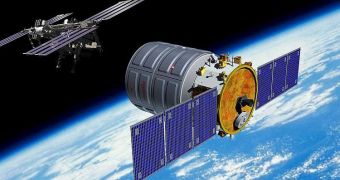According to the American space agency, the two main competitors for resupplying the International Space Station (ISS) with proprietary spacecraft and rockets are now falling further behind schedule. A total of four companies are receiving NASA funds for this work, but two of them lead the way.
The current NASA flight manifest shows that both Hawthorne, California-based Space Exploration Technologies Corporation (SpaceX) and Virginia-based Orbital Sciences Corporation (OSC) will only manage to launch their respective rockets in 2012, rather than the last quarter of 2011, as planned.
OSC is planning to reach the ISS via the Taurus II delivery system and the Cygnus unmanned space capsule. The two should have flown together months ago, but various technical and engineering delays have forced mission controllers to let the mission slip increasingly farther away.
NASA experts estimate that the first flight of the combo system will take place in January 2012, while the second flight – which is currently scheduled for February – may lift off to low-Earth orbit in May.
“As we have been consistent in saying, no one should be surprised if that updated schedule shows a slip to the right. This is a difficult and complex project,” explained OSC spokesman Barron Beneski in an e-mail released on October 5.
“The current public schedule says the Taurus 2 test flight is scheduled for the very end of 2011, followed by the COTS demonstration flight right at the end of February. That was what our schedule of work was telling us in July when we reported the second quarter results,” he added.
On the other hand, SpaceX is trying to win the NASA Commercial Orbital Transportation Services (COTS) program by developing the Falcon 9 medium-lift delivery system and the Dragon unmanned spacecraft. Its rocket has already flown to space twice.
During the second flight, the delivery system also carried the Dragon space capsule, which successfully separated from the rocket, and was able to complete several orbits around the planet, before finally landing safely in the Pacific Ocean.
This remarkable achievement made SpaceX a member of the most exclusive club of space-faring countries, which only includes China, Russia and the United States. Though this means it has an advantage over other COTS companies, the firm is proving unable to press onwards.
At this point, it is widely believed that the next Falcon 9/Dragon launch will take place in January, even if the company still indicates that it will attempt to do so starting in mid-December, Space reports.

 14 DAY TRIAL //
14 DAY TRIAL //